Monsoons and mountains: unpicking the sedimentary geology of Asia
CHEMICAL WEATHERING – the process of rainwater chemically reacting with minerals in a rock, converting them to new (and often weaker) minerals, such as clays
MONSOON – a system of winds that reverse direction seasonally, bringing strong rains over continental areas during the summer
PLATEAU – an area of relatively level high ground. The Tibetan Plateau is the highest and largest in the world
SEDIMENT – loose mineral material composed of eroded rocks
SEDIMENT CORE – a sample collected by drilling vertically into sediment. Materials deeper in the sediment core were deposited longer ago in geological time
SEDIMENTARY ROCK – rock composed of solidified sediment
“Monsoons are climatic systems that occur on all the major continents,” says Peter. “They reflect seasonal changes in wind patterns, driven by temperature differences between the ocean and land, which bring rain deep into the continental interior.” The Asian monsoon is the largest in the world, due to the unique geography of the region. “The shape and scale of the Himalayas and the Tibetan Plateau make the monsoon stronger,” Peter explains. “In fact, the rain of the Asian monsoon is responsible for sustaining the agricultural systems that feed the majority of the world’s population.”
While mountains can affect monsoons, monsoons can also affect mountains. Rain causes chemical weathering of rocks, and over long timescales, monsoons will erode mountains.
OCEAN DRILLING
Peter’s work takes him to some far-flung corners of the world, both on land and at sea. “In the South China Sea, we used a modified oil drilling ship to penetrate hundreds of metres into the seafloor, to extract long sediment cores that provide a vertical record of the Earth’s geological history,” he explains.
These marine expeditions can be long and intense. “We spend eight weeks at sea, working 12-hour shifts with no days off,” says Peter. Each expedition will contain a variety of different scientists on board, and teamwork is key to ensuring all the scientific research objectives are achieved. Some scientists will describe the sediment cores as they are brought onto the ship, some will measure the chemical or magnetic properties of the cores, and some will identify fossils in the sediment.
ANALYSING SEDIMENT
Peter and the team analyse the sediment extracted in these cores to reconstruct how the environment and climate have changed in the past. The cores provide clues about the rate of continent erosion and the chemical breakdown of sediments, which indicate the strength of monsoons in the geological past.
Geologists use many innovative methods to analyse sediment cores, including:
- Chemical analysis: Sediment is dried, crushed and melted, then its exact chemical composition is analysed, revealing the extent of chemical weathering.
- Zircon dating: Zircon crystals contain uranium, which decays into lead at a known rate. By comparing the amount of uranium and lead in zircon, the source and, sometimes, the age of the sediment can be determined.
- Fossil dating: Because species have evolved over time, the type of fossils found in sediment can be used to estimate the time when the sample was deposited.
- Radiocarbon dating: The weakly radioactive carbon isotope, carbon-14, decays at a known rate. Relatively young sediment samples (less than 60,000 years old) can be dated by measuring the amount of carbon-14 they contain.
- Optically stimulated luminescence dating: Sunlight ionises electrons in a mineral, and by measuring the behaviour of a mineral’s electrons, geologists can estimate how long sediment has been buried and unaffected by sunlight.
CHANGING IDEAS
“For a long time, people thought that the Asian monsoon gathered strength around 8 million years ago,” Peter says. “However, our work in the South China Sea indicated it’s actually much older, strengthening by at least 24 million years ago, if not before.” The Tibetan Plateau formed when the Indian subcontinent collided with Asia around 50 million years ago, with enough force to drive rock thousands of metres above sea level. However, the landscape looked very different to the mountains we are familiar with today – until the monsoon gathered power.
“I revealed that the Himalayas were formed from the rocks of the Tibetan Plateau as a result of the monsoon’s erosive power,” explains Peter. “Stronger rains removed sedimentary rocks at the surface, allowing deep-buried rocks to rise to the Earth’s surface.” The distinctive jagged peaks and deep valleys of the Himalayas are the result of this erosive process, carving them out of the plateau from the top down.
CIVILISATIONS PAST AND PRESENT
The Indus delta and flood plains in Pakistan, though arid today, were one of the most fertile regions in the world back in the Bronze Age. Peter has unpicked how this fertility, and the benefits it brought for early civilisations, are connected to the monsoon. After extracting sediment cores from the Indus delta and flood plains inland, Peter dated the sediment using carbon-14 dating and optically stimulated luminescence, analysed the sediment chemistry to determine the intensity of weathering, and examined the variety of pollen in the sediment that reflects the vegetation that grew in the region.
Around 4,000 years ago, the Indus civilisation collapsed. Peter believes his sediment cores shed light on why this happened. “We conclude the collapse of these early urban societies was linked to the weakening of the monsoon,” he explains. This weakening led to reduced rainfall and diminishing agricultural productivity, forcing the population to migrate to the more fertile regions of what is now northern India.
These findings have implications for the modern world. “The sensitivity of human society to changes in monsoons is quite striking,” says Peter. Today, global climate change is affecting monsoon patterns. As billions of people rely on the Asian monsoon, this is troubling. “Climate change will mostly make monsoons stronger, but will also make them less reliable and stormier,” says Peter. This will threaten crop viability, not to mention bring risks to people’s lives and livelihoods through flooding and storms. Understanding what drives monsoons and using this information to predict their future behaviour will help society mitigate these risks.
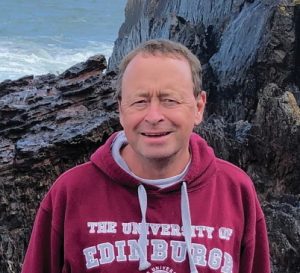 PROFESSOR PETER CLIFT
PROFESSOR PETER CLIFTCharles T McCord Chair in Petroleum Geology, Louisiana State University, USA
FIELD OF RESEARCH: Sedimentary Geology
RESEARCH PROJECT: Using sedimentary cores to understand the relationships between the Asian monsoon and the Himalayan mountains
FUNDERS: International Ocean Discovery Program, National Science Foundation, US Navy, ExxonMobil
Peter tells us more about being a sedimentary geologist:
WHAT INSIGHTS CAN SEDIMENTARY ROCKS LEND US?
The preservation of sedimentary rocks usually reflects large-scale tectonic processes, so studying them can help geologists understand how continents form and what they looked like in the past. They also record the long-term erosion of mountain belts, and when combined with structural measurements of the mountains themselves, we have a powerful way of understanding what controls the surface processes of the planet. Sedimentary records are also a reliable archive of long-term geological processes, such as changes to the climate and the evolution of life.
WHAT DO YOU ENJOY MOST ABOUT YOUR WORK?
My work takes me to interesting places around the world, including beautiful and remote regions that few travellers ever visit. I love fieldwork, though much of my work is done back in the lab. I enjoy the challenge of reconstructing how the Earth has changed over time and discovering the unexpected links between different areas of Earth science. This process is especially rewarding when done alongside students, supporting them in their own research growth and understanding. It’s very satisfying to complete a project and see our final publications.
AND WHAT DO YOU FIND MOST CHALLENGING?
The open-ended nature of my work means there can be a challenge in deciding what to do next – thinking of something really novel, rather than just repeating past studies in a new place. Linking sediments to climate is particularly challenging but is aided by international collaboration. I enjoy facing these challenges by building teams of geologists from around the world, combining our skillsets to tackle a particular problem.
• Historically, many sedimentary geologists worked in the oil and gas industries, using their skills to locate new reservoirs of fossil fuels. Today, sedimentary geologists are using these same skills in the carbon capture industry, locating subsurface rock units that can store carbon, thereby reducing atmospheric carbon dioxide levels. Sedimentary geologists can also be found working in environmental consultancy, engineering geology, marine geology and even in forensic investigations.
• Peter recommends joining local or national geological societies that often organise fieldwork opportunities and scientific meetings, and provide educational resources and information about geology careers. Examples include The Geological Society of America (www.geosociety.org) and The Geological Society (www.geolsoc.org.uk).
• The Department of Geology and Geophysics at Louisiana State University, where Peter works, offers many outreach opportunities. The Science Café (www.lsu.edu/research/news/LSU-science-cafe.php) provides public evening lectures on a range of scientific subjects, while EnvironMentors (www.lsu.edu/cce/experience/environmentors.php) connects high school students with LSU students to conduct joint science research projects.
• Many research groups in Peter’s department host high school students who participate in research projects. Contact the department office at [email protected], which can help connect schools with professors who provide educational opportunities.
• Look for opportunities such as work experience, internships and summer schools that will provide you with invaluable insights and geological experience. For instance, the US Geological Survey has a long-standing Summer Fellowship Program that sponsors interns: www.usgs.gov/science-support/osqi/youth-education-science/geology-summer-fellows-program
Reference
https://doi.org/10.33424/FUTURUM225
CHEMICAL WEATHERING – the process of rainwater chemically reacting with minerals in a rock, converting them to new (and often weaker) minerals, such as clays
MONSOON – a system of winds that reverse direction seasonally, bringing strong rains over continental areas during the summer
PLATEAU – an area of relatively level high ground. The Tibetan Plateau is the highest and largest in the world
SEDIMENT – loose mineral material composed of eroded rocks
SEDIMENT CORE – a sample collected by drilling vertically into sediment. Materials deeper in the sediment core were deposited longer ago in geological time
SEDIMENTARY ROCK – rock composed of solidified sediment
“Monsoons are climatic systems that occur on all the major continents,” says Peter. “They reflect seasonal changes in wind patterns, driven by temperature differences between the ocean and land, which bring rain deep into the continental interior.” The Asian monsoon is the largest in the world, due to the unique geography of the region. “The shape and scale of the Himalayas and the Tibetan Plateau make the monsoon stronger,” Peter explains. “In fact, the rain of the Asian monsoon is responsible for sustaining the agricultural systems that feed the majority of the world’s population.”
While mountains can affect monsoons, monsoons can also affect mountains. Rain causes chemical weathering of rocks, and over long timescales, monsoons will erode mountains.
OCEAN DRILLING
Peter’s work takes him to some far-flung corners of the world, both on land and at sea. “In the South China Sea, we used a modified oil drilling ship to penetrate hundreds of metres into the seafloor, to extract long sediment cores that provide a vertical record of the Earth’s geological history,” he explains.
These marine expeditions can be long and intense. “We spend eight weeks at sea, working 12-hour shifts with no days off,” says Peter. Each expedition will contain a variety of different scientists on board, and teamwork is key to ensuring all the scientific research objectives are achieved. Some scientists will describe the sediment cores as they are brought onto the ship, some will measure the chemical or magnetic properties of the cores, and some will identify fossils in the sediment.
ANALYSING SEDIMENT
Peter and the team analyse the sediment extracted in these cores to reconstruct how the environment and climate have changed in the past. The cores provide clues about the rate of continent erosion and the chemical breakdown of sediments, which indicate the strength of monsoons in the geological past.
Geologists use many innovative methods to analyse sediment cores, including:
- Chemical analysis: Sediment is dried, crushed and melted, then its exact chemical composition is analysed, revealing the extent of chemical weathering.
- Zircon dating: Zircon crystals contain uranium, which decays into lead at a known rate. By comparing the amount of uranium and lead in zircon, the source and, sometimes, the age of the sediment can be determined.
- Fossil dating: Because species have evolved over time, the type of fossils found in sediment can be used to estimate the time when the sample was deposited.
- Radiocarbon dating: The weakly radioactive carbon isotope, carbon-14, decays at a known rate. Relatively young sediment samples (less than 60,000 years old) can be dated by measuring the amount of carbon-14 they contain.
- Optically stimulated luminescence dating: Sunlight ionises electrons in a mineral, and by measuring the behaviour of a mineral’s electrons, geologists can estimate how long sediment has been buried and unaffected by sunlight.
CHANGING IDEAS
“For a long time, people thought that the Asian monsoon gathered strength around 8 million years ago,” Peter says. “However, our work in the South China Sea indicated it’s actually much older, strengthening by at least 24 million years ago, if not before.” The Tibetan Plateau formed when the Indian subcontinent collided with Asia around 50 million years ago, with enough force to drive rock thousands of metres above sea level. However, the landscape looked very different to the mountains we are familiar with today – until the monsoon gathered power.
“I revealed that the Himalayas were formed from the rocks of the Tibetan Plateau as a result of the monsoon’s erosive power,” explains Peter. “Stronger rains removed sedimentary rocks at the surface, allowing deep-buried rocks to rise to the Earth’s surface.” The distinctive jagged peaks and deep valleys of the Himalayas are the result of this erosive process, carving them out of the plateau from the top down.
CIVILISATIONS PAST AND PRESENT
The Indus delta and flood plains in Pakistan, though arid today, were one of the most fertile regions in the world back in the Bronze Age. Peter has unpicked how this fertility, and the benefits it brought for early civilisations, are connected to the monsoon. After extracting sediment cores from the Indus delta and flood plains inland, Peter dated the sediment using carbon-14 dating and optically stimulated luminescence, analysed the sediment chemistry to determine the intensity of weathering, and examined the variety of pollen in the sediment that reflects the vegetation that grew in the region.
Around 4,000 years ago, the Indus civilisation collapsed. Peter believes his sediment cores shed light on why this happened. “We conclude the collapse of these early urban societies was linked to the weakening of the monsoon,” he explains. This weakening led to reduced rainfall and diminishing agricultural productivity, forcing the population to migrate to the more fertile regions of what is now northern India.
These findings have implications for the modern world. “The sensitivity of human society to changes in monsoons is quite striking,” says Peter. Today, global climate change is affecting monsoon patterns. As billions of people rely on the Asian monsoon, this is troubling. “Climate change will mostly make monsoons stronger, but will also make them less reliable and stormier,” says Peter. This will threaten crop viability, not to mention bring risks to people’s lives and livelihoods through flooding and storms. Understanding what drives monsoons and using this information to predict their future behaviour will help society mitigate these risks.
 PROFESSOR PETER CLIFT
PROFESSOR PETER CLIFTCharles T McCord Chair in Petroleum Geology, Louisiana State University, USA
FIELD OF RESEARCH: Sedimentary Geology
RESEARCH PROJECT: Using sedimentary cores to understand the relationships between the Asian monsoon and the Himalayan mountains
FUNDERS: International Ocean Discovery Program, National Science Foundation, US Navy, ExxonMobil
Peter tells us more about being a sedimentary geologist:
WHAT INSIGHTS CAN SEDIMENTARY ROCKS LEND US?
The preservation of sedimentary rocks usually reflects large-scale tectonic processes, so studying them can help geologists understand how continents form and what they looked like in the past. They also record the long-term erosion of mountain belts, and when combined with structural measurements of the mountains themselves, we have a powerful way of understanding what controls the surface processes of the planet. Sedimentary records are also a reliable archive of long-term geological processes, such as changes to the climate and the evolution of life.
WHAT DO YOU ENJOY MOST ABOUT YOUR WORK?
My work takes me to interesting places around the world, including beautiful and remote regions that few travellers ever visit. I love fieldwork, though much of my work is done back in the lab. I enjoy the challenge of reconstructing how the Earth has changed over time and discovering the unexpected links between different areas of Earth science. This process is especially rewarding when done alongside students, supporting them in their own research growth and understanding. It’s very satisfying to complete a project and see our final publications.
AND WHAT DO YOU FIND MOST CHALLENGING?
The open-ended nature of my work means there can be a challenge in deciding what to do next – thinking of something really novel, rather than just repeating past studies in a new place. Linking sediments to climate is particularly challenging but is aided by international collaboration. I enjoy facing these challenges by building teams of geologists from around the world, combining our skillsets to tackle a particular problem.
• Historically, many sedimentary geologists worked in the oil and gas industries, using their skills to locate new reservoirs of fossil fuels. Today, sedimentary geologists are using these same skills in the carbon capture industry, locating subsurface rock units that can store carbon, thereby reducing atmospheric carbon dioxide levels. Sedimentary geologists can also be found working in environmental consultancy, engineering geology, marine geology and even in forensic investigations.
• Peter recommends joining local or national geological societies that often organise fieldwork opportunities and scientific meetings, and provide educational resources and information about geology careers. Examples include The Geological Society of America (www.geosociety.org) and The Geological Society (www.geolsoc.org.uk).
• The Department of Geology and Geophysics at Louisiana State University, where Peter works, offers many outreach opportunities. The Science Café (www.lsu.edu/research/news/LSU-science-cafe.php) provides public evening lectures on a range of scientific subjects, while EnvironMentors (www.lsu.edu/cce/experience/environmentors.php) connects high school students with LSU students to conduct joint science research projects.
• Many research groups in Peter’s department host high school students who participate in research projects. Contact the department office at [email protected], which can help connect schools with professors who provide educational opportunities.
• Look for opportunities such as work experience, internships and summer schools that will provide you with invaluable insights and geological experience. For instance, the US Geological Survey has a long-standing Summer Fellowship Program that sponsors interns: www.usgs.gov/science-support/osqi/youth-education-science/geology-summer-fellows-program
Peter says there are many pathways to becoming a sedimentary geologist, but a grounding in basic sciences is essential. He studied maths, physics and chemistry at high school, but suggests that geography and biology would also be useful.
Many universities offer degrees in geology or Earth sciences, which will include courses in sedimentary geology. Peter advises maintaining a broad scientific understanding rather than focusing on a specialised area too early in your studies, as geologists draw on many different methods to solve complex problems.
WHAT WERE YOUR INTERESTS GROWING UP?
I was always interested in the natural world and being outside, coupled with an academic interest in physics. I loved camping with friends and with the school cadet force, and the notion of travelling around the world and witnessing different environments and cultures appealed to me. I’ve always loved ships too, which perhaps influenced my choice to pursue marine geology.
WHAT INSPIRED YOU TO BE A GEOLOGIST?
My love of mountain landscapes, first and foremost. They seemed very exotic compared to the rather flat landscape of southern England where I grew up. Also, my father worked for an oil company, which made me consider a career in geology. It seemed a nice coincidence to be able to pursue a career that involved both science and travelling to faraway places.
WHAT ARE YOUR PROUDEST CAREER ACHIEVEMENTS SO FAR, AND WHAT ARE YOUR AMBITIONS FOR THE FUTURE?
Being able to show how closely the geology of Asia and its monsoons are coupled over long periods of time was a great achievement for me. In the future, I aim to decipher why the monsoon got stronger only 24 million years ago, rather than immediately after the collision of India and Asia, 50 million years ago. I hope to work with quantitative modelling scientists to develop conceptual models of how Earth’s geology interacts with its biosphere and atmosphere.
WHAT HAVE BEEN YOUR FIELDWORK HIGHLIGHTS?
I’ve had the good fortune to work in many interesting places, but perhaps my favourite is Vietnam. The country has fascinating geology, friendly people and delicious food. I have also had wonderful experiences hiking and camping in the Indian Himalayas. It’s incredible to wake up to see snow-capped mountains from your tent. I also enjoyed fieldwork in remote and beautiful locations in Alaska, though we had to be careful about the wild animals. The most important factor for enjoyable fieldwork is to do it in good human company!
WHAT IS IT LIKE TO BE AT SEA FOR MONTHS AT A TIME?
Ocean drilling expeditions involve a long time away from home in an environment with very little privacy – we share cabins and all eat together, so there is no escaping from people. But, as long as the team members are nice (which they normally are!), expeditions are great fun and you make lifelong friendships. The pace of work ensures it is never boring as there are always things to do. It’s always exciting to come back to dry land, and the samples collected keep us busy for years after the expedition.
DOES YOUR LOVE OF GEOLOGY SPILL OVER INTO YOUR FREE TIME?
For me, geology is more of a lifestyle than a career. I am a complete fanatic! Most of my friends are also geologists, my house is full of interesting rock specimens and my holidays involve seeing rocks in exotic places! Some people might think I spend all my time working, but for me it feels like being paid to pursue my hobby.
01 Get a good, solid foundation in the physical sciences. Don’t give up maths and physics just because they are difficult – they are important for the modern scientific world.
02 Make sure you work on something that inspires you. Success depends on being excited and passionate about your career.
Write it in the comments box below and Peter will get back to you. (Remember, researchers are very busy people, so you may have to wait a few days.)

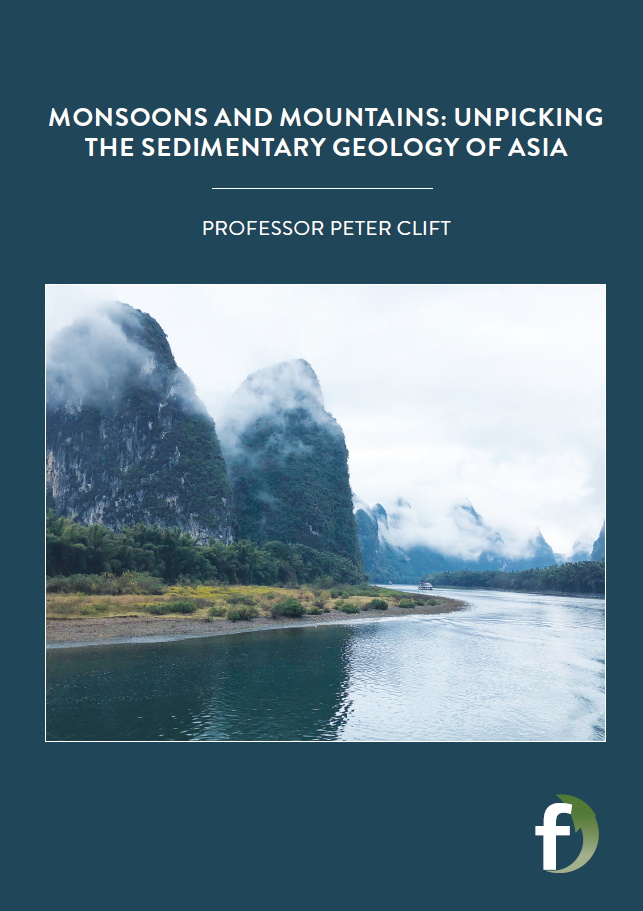

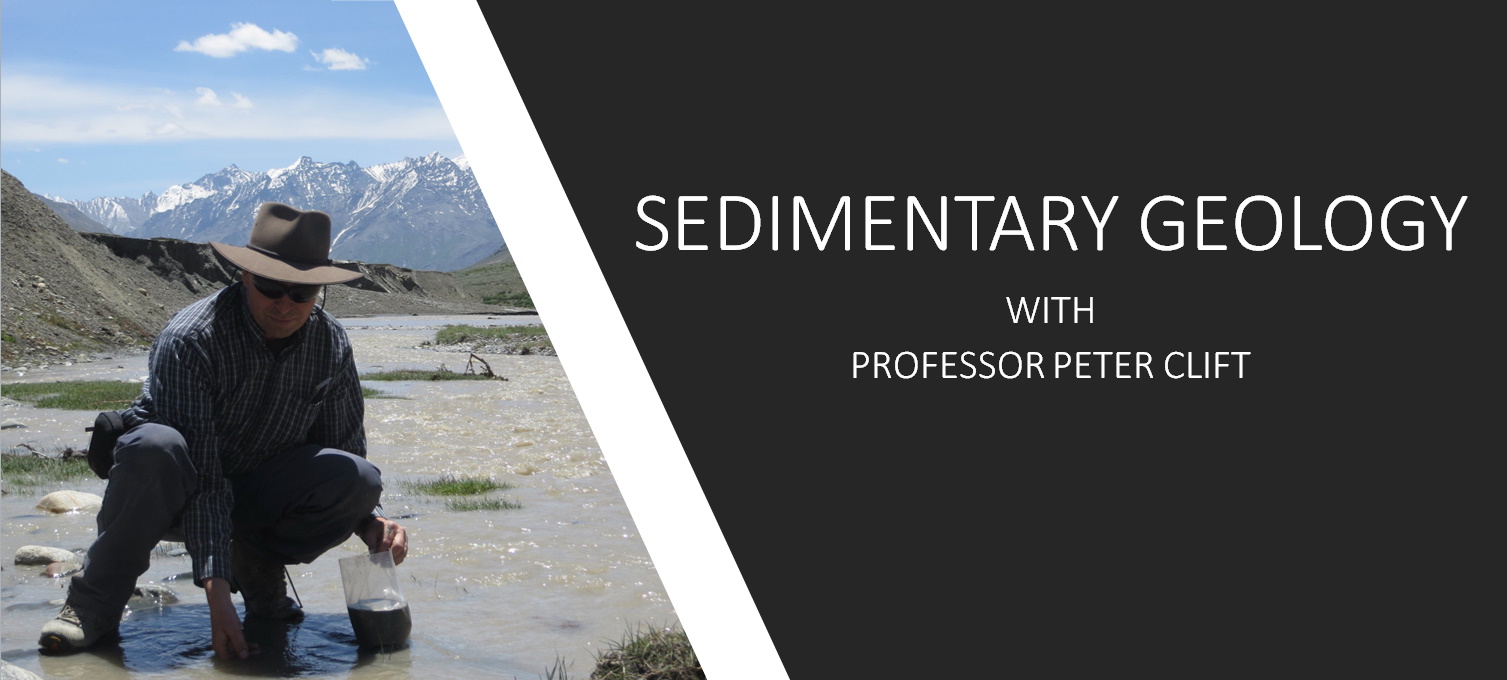
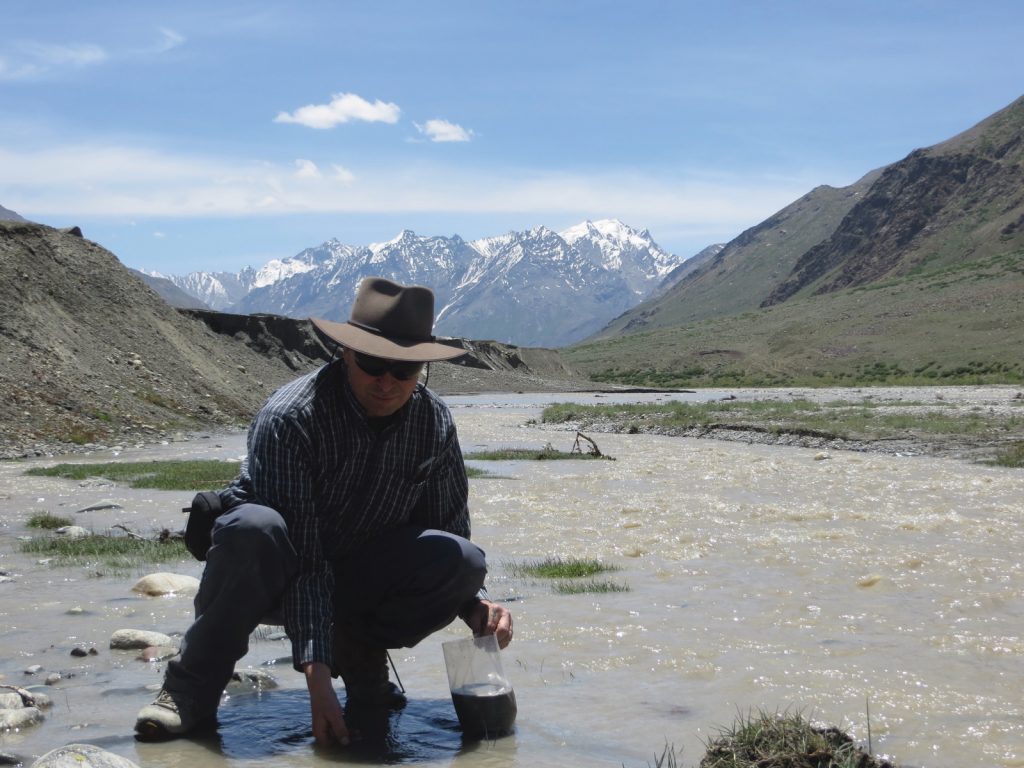

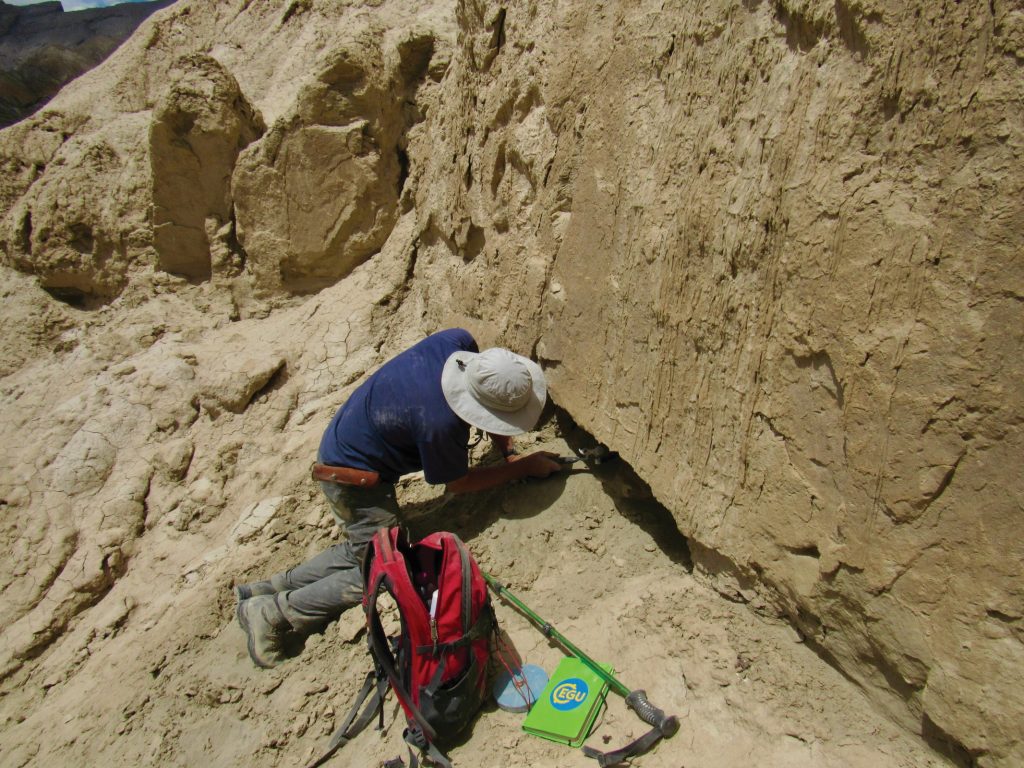
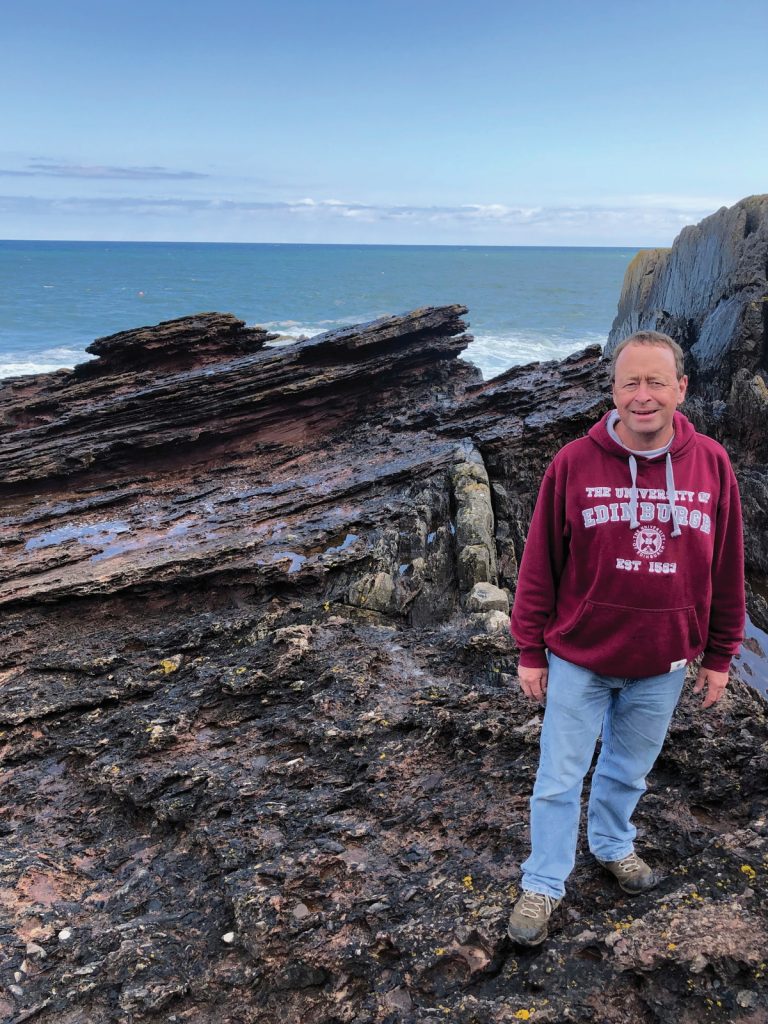
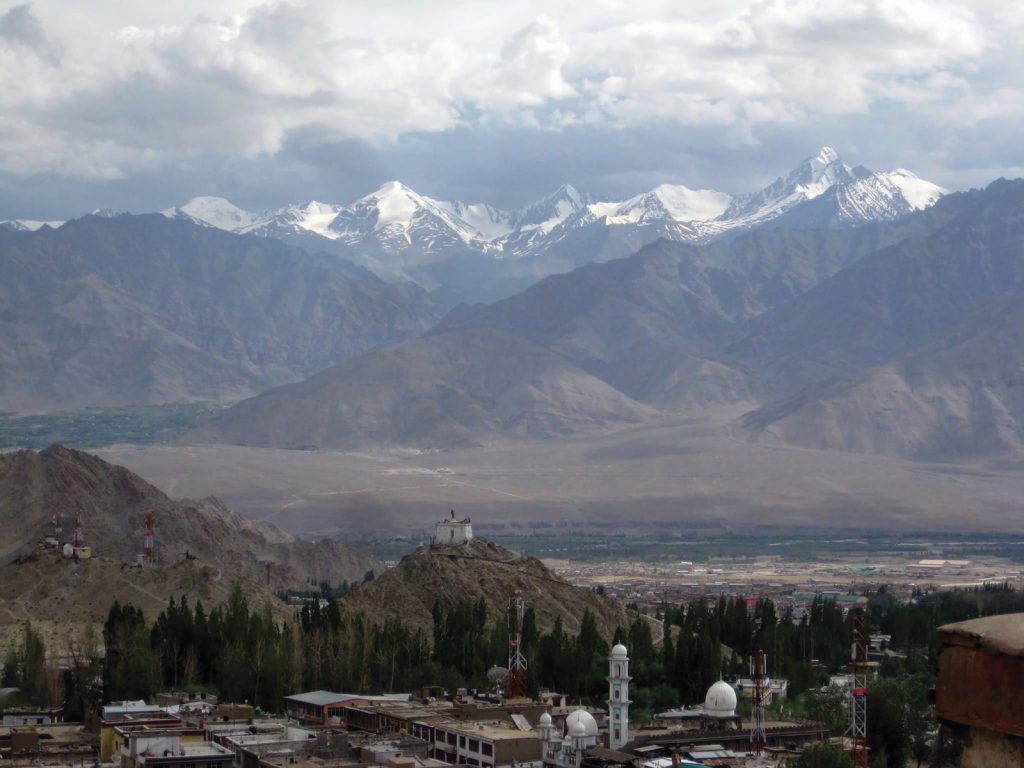
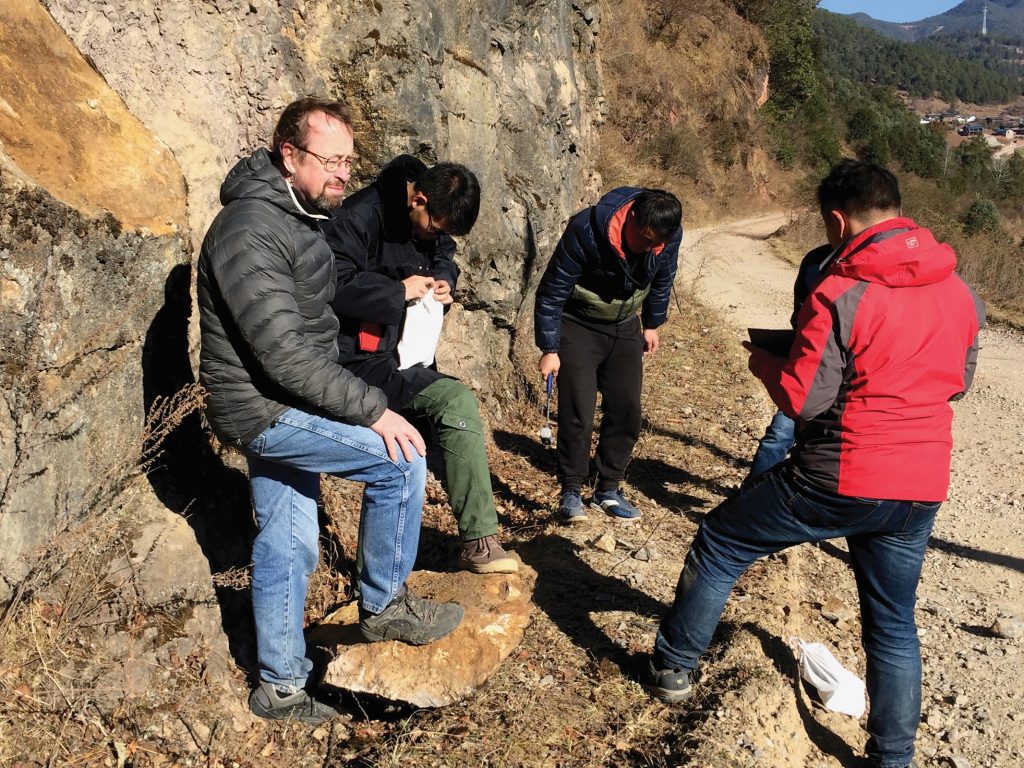
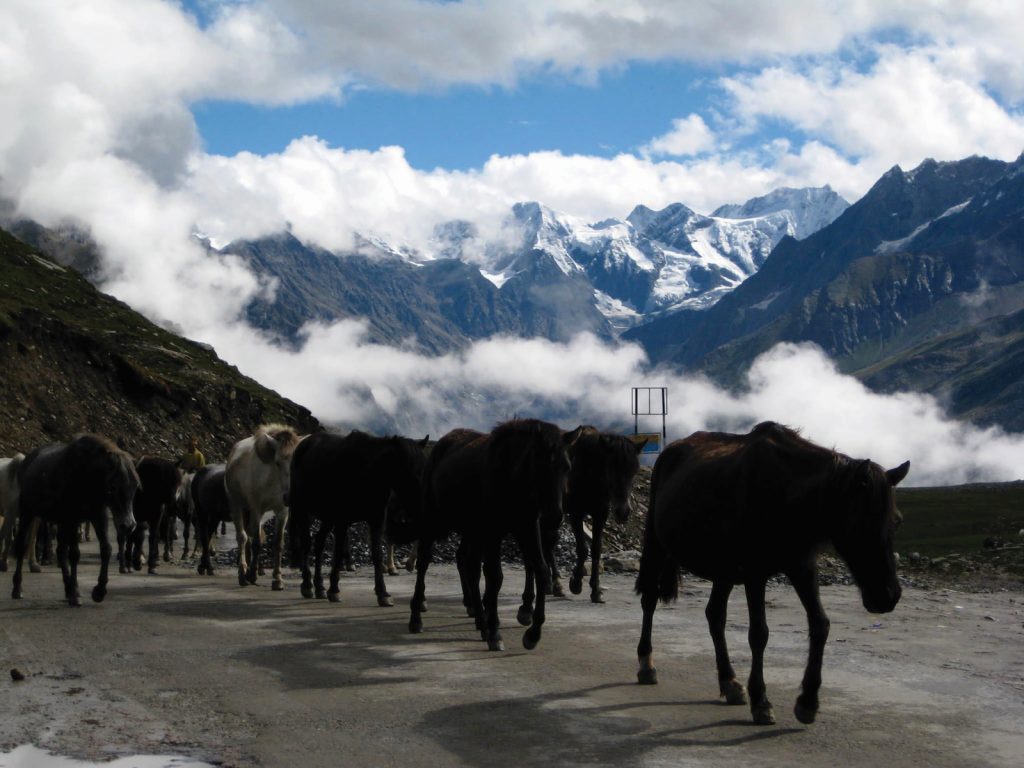

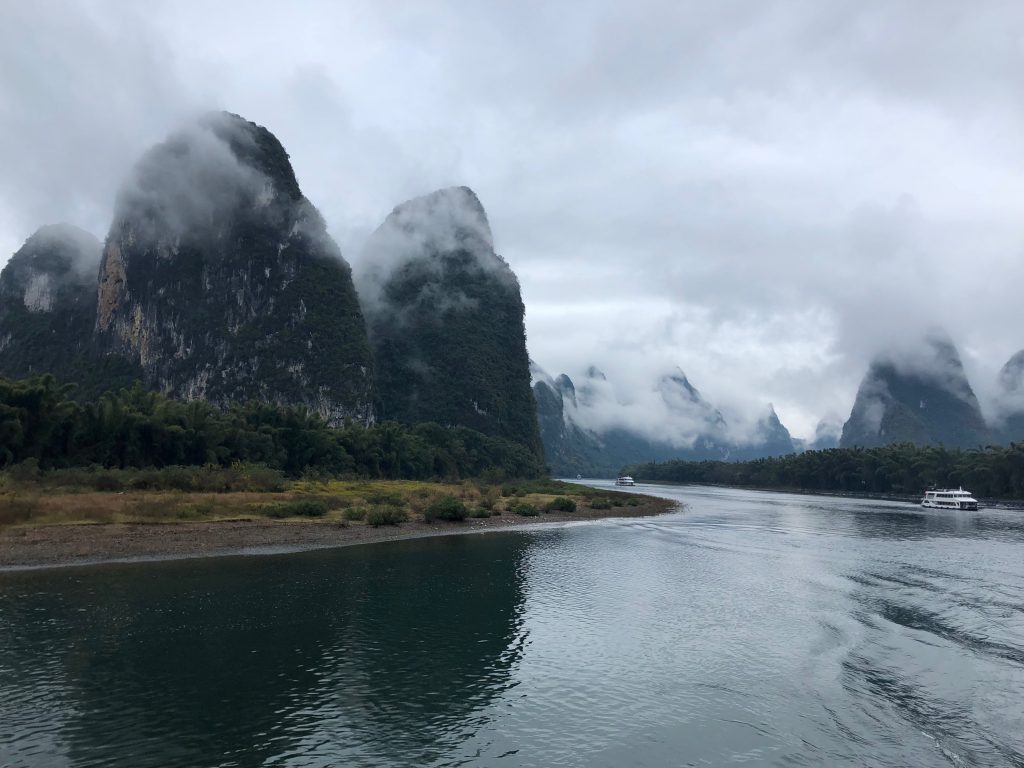






The information is awesome. I am intrested in this very much field of Geosciences. Need any suggestions in this direction.
I see that you are already a doctor and presumably you did a PhD in the geosciences? I would think that alone would set you up well. The main issue is to acquire some funding to support research work and of course access to the field whether that’s onshore or offshore. Tectonic and climate interactions is a hot topic so the real hurdle is trying to decide what specifically you’re interested in tackling which is a question you would need to ask yourself. I think that South and Southeast Asia provide lots of research opportunities when dealing with Cenozoic geology.
Interesting information. I love the aspect of marine expedition-working on onboard a drilling ship is quite a unique opportunity. From my experience, working offshore shapes one’s life and gives one the opportunity to live a life outside home (a home away from home). I am looking forward to joining the Solid Earth and Surface Processes Research group come 2023 Fall semester
Let’s hope you’re application is a good one and successful
Hello, making contact.
Nice to hear from you again. I’ll send you an email